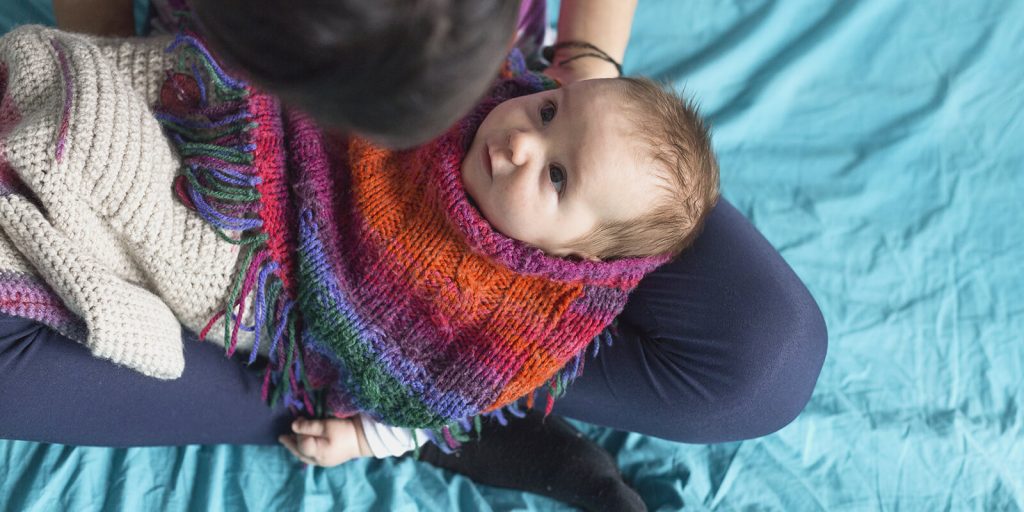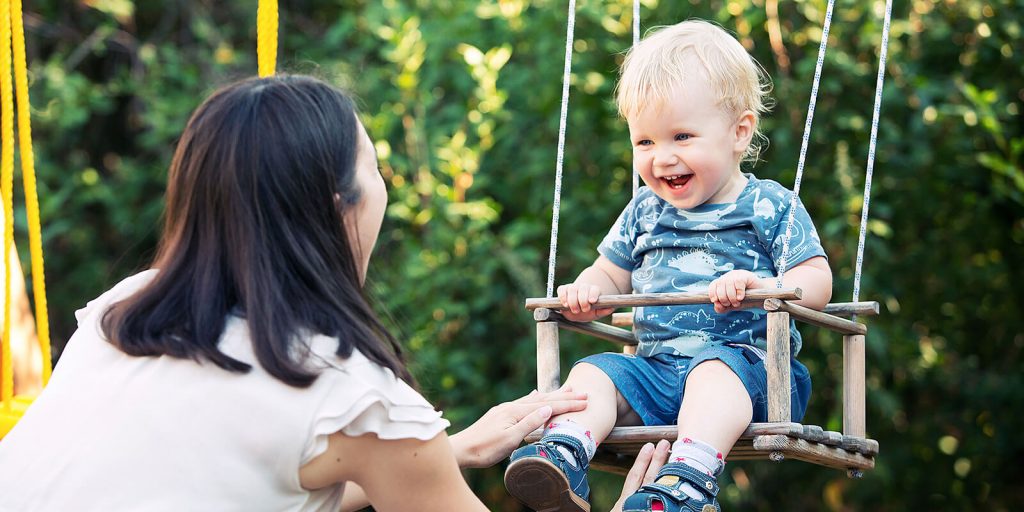
Did you know that children start learning in the womb? Stimulating your unborn child before he or she makes his entrance into the world through music and speaking has been shown to produce smarter, better adjusted children. Early stimulation allows the brain to develop more neural pathways, thereby improving cognitive function as the child grows. Many parents are taking advantage of this new understanding of infant brain development, and investing the time and effort needed to stimulate their children’s growing brains. You can too. Here are six activities to try:

You don’t have to have a pop star’s range to sing to your child. Hold, rock or caress your child while singing a lullaby as part of your bedtime routine. You’ll find that this calming activity before going to sleep helps form close, emotional ties with your child. Sing to him while you are playing games or driving in the car. Additionally, nursery rhymes and finger action rhymes greatly enhance early language and kinesthetic (tactile) development. Exposing children to nursery rhymes creates an awareness of word structure. The broader children’s phonemic awareness, the better their reading skills in later years.
Have you ever found yourself trying to communicate an idea to someone who doesn’t speak the same language? At some point, you start gesturing with your hands to try to get the message across. In recent years, teaching preverbal children basic sign language has gained wide acceptance. Since very young c
hildren develop the fine muscles in their hands before they develop those required for speech, simple signing allows them to communicate basic needs, which reduces frustration and aggression, and primes the child for later communication. It’s been shown that infants who learnt sign language outperform their peers in school language tests, even after grade two. Can’t say it? Sign it!

Did you ever wonder why children adore swings, seesaws, merry-go-rounds and rollercoasters? It’s not surprising. The first sensory system to fully develop by six months after conception is the vestibular system, which is responsible for balance and coordination. The vestibular system functions like a traffic cop, telling each sensation where and when it should go or stop. One of the main ways of stimulating the vestibular system is by swinging or rocking your child. It’s an important survival skill for infants — which is why simple rocking at an early age will often calm them. Turning your child upside down (gently of course!) and lifting their legs off the ground also greatly stimulates this vital system. The more stimulation it receives, the more quickly the child’s physical abilities will develop.
Counting rhymes or songs reinforce your child’s natural sense of quantity. It is known that children are born with a brain wired for maths. That’s why these areas should be stimulated as early as possible to ensure your child will instinctively understand and connect to mathematics in the future. Research with newborns and infants shows that they can tell the difference between numbers of objects, they have arithmetical expectations and they react strongly to experiments in which outcomes are arithmetically impossible. Look for opportunities to count with your child. You’ll find that counting and aspects of mathematics are inherent in many day-to-day situations—while cooking, playing games or taking a walk. Stimulating children’s mathematical brains when they are still infants primes them for future learning.

Playing with infants’ fingers and toes always seems to amuse them, but there’s more to it than just making them laugh. Stimulating fingers and toes and fingers are vital for both brain and physical development. As infants learn to use their fingers more, gross and fine motor development and cognitive skills are also improved. Chants and games in which children’s hands and feet are exercised in a crossover pattern are also important. Why? Because crossing the body’s midway encourages neurological preparation for learning by coordinating both brain hemispheres. Information gets passed through the nerve fibres that join the two sides. This can prove useful for learning crawling, walking and physical dexterity as well as for later skills such as spelling, writing, listening, reading, and comprehension.
Children love listening to the same story — they never seem to tire of hearing their favourite stories over and over again. Repetition has its benefits, because it helps them actively participate in the story. They anticipate what’s coming next and join in enthusiastically. Use baby sign language with your child when reading stories to him. You’ll find that your child will often choose the story he wants, signing the characters from a well-loved story. Reading is not only an enjoyable activity, it’s also crucial for the development of literacy and prepares children for school. Make time in your routine to read to your child for at least 20 minutes every day. Most of all, enjoy it! Fostering a love of reading is giving your child a gift that will last a lifetime.